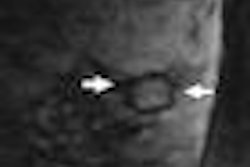In 2006, the U.S. Food and Drug Administration (FDA) said it wanted to make it easier for full-field digital mammography (FFDM) systems to get to market by relaxing the approval process for new products. Three years later, the mammography industry is still waiting for the FDA to follow through, a delay that some industry experts believe is contributing to higher prices for FFDM technology and limited access to new innovations.
Mammography has been one of the last imaging modalities to go digital, but FFDM sales have been picking up steam due to the recognized benefits of digital technology, with a recent market report indicating that FFDM sales now exceed those of analog systems. Digital mammography images are easier to transmit and store, and FFDM is believed to have clinical benefits for women with dense breast tissue.
Due to the novelty of the technology, new FFDM products have been treated as class III devices since the FDA in 2000 approved the first FFDM unit, Senographe 2000D from GE Healthcare of Chalfont St. Giles, U.K. This means that FFDM products have to go through the premarket approval (PMA) process, which requires the submission of data from clinical trials and can take a year or more. The less rigorous 510(k) process used for class II devices typically takes around 90 days.
An easier road?
In May 2006, the FDA's Radiological Devices Panel recommended that FFDM systems be reclassified from class III devices to class II devices. A big factor that contributed to the agency's willingness to switch were results from the Digital Mammographic Imaging Screening Trial (DMIST) study, conducted by the American College of Radiology Imaging Network (ACRIN), which were released in 2005.
"Our understanding of FFDM technology has improved to the point that we can develop appropriate special controls so that we can assure adequate safety and effectiveness through the 510(k) process," said Robert Phillips, chief of the Radiological Devices Branch, at that 2006 meeting.
But it took two years for the FDA to issue a proposed rule in the Federal Register regarding the reclassification and to publish a draft guidance on how FFDM will be regulated as a class II device. After receiving public comments on that document, the agency has still not acted on the proposal, which remains under review at the FDA, according to Siobhan DeLancey of the agency's office of public affairs.
In the meantime, the last PMA to be issued by the FDA was in July 2006 -- to the FCRm computed radiography FFDM system from Fujifilm Medical Systems USA of Stamford, CT. Some imaging vendors are believed to be awaiting final rules from the FDA before submitting applications for other new FFDM products, including additional CR mammography systems as well as digital breast tomosynthesis (DBT) units.
And in what's become a familiar refrain, some companies are commercially shipping to international customers products that aren't available in the U.S. For example, mammography vendor Hologic of Bedford, MA, has been selling its Selenia Dimensions tomosynthesis product in Europe and Canada, but the system's U.S. launch has been delayed pending direction from the FDA on its regulatory approach. In fact, Hologic postponed an FDA panel hearing originally scheduled for June 2009 to review the product's PMA application because of changes in the agency's focus.
What gives?
Meanwhile, FFDM users and advocates are baffled as to why the FDA hasn't closed the loop.
"There are half a dozen companies waiting for this reclassification," said one industry watcher who requested anonymity. "If more devices were cleared, there'd be more competition, which would drive down prices and spur innovation. What's the holdup?"
The FDA did not respond to questions about why the proposed guidance has yet to be finalized.
"The reasons [the FDA hasn't finalized the classification] are unclear," said Dr. Michael Linver, vice president of the National Consortium of Breast Centers (NCBC) in Warsaw, IN, and a practicing radiologist at X-Ray Associates of New Mexico in Albuquerque. "But the delay is frustrating for those of us who so depend on the approval of the multiple new machines we see being used in other countries that could take the quality of breast imaging another step forward."
Logistics could be working against a final rule, said Gloria Romanelli, senior director of legislative and regulatory relations at the American College of Radiology in Reston, VA. A change in administration -- including a change in political party -- can slow rulemaking down, in that a new administration often reclassifies and appoints staff and reviews existing policies. And in August, the director of the FDA's Center for Devices and Radiological Health (CDRH), Dan Schultz, resigned.
"There has also been increased congressional scrutiny of FDA's device approval process in the recent past," Romanelli said.
And then there's good old politics, according to Dr. Daniel Kopans, professor of radiology at Harvard Medical School and senior radiologist in the Breast Imaging Division at Massachusetts General Hospital, both in Boston.
"[It may be that the reclassification has not been completed] because the FDA is afraid of making any mistake with regard to breast cancer screening, due to high public awareness," Kopans said. "The agency may also be delaying since the companies that had to follow the PMA might resent the expense that they had to incur that the other companies would avoid."
In any case, the FDA remains mum on when it will finalize the classification, Romanelli said.
"Hopefully we'll hear something soon," she said. "Our sense at the ACR is that once FFDM is reclassified, we'll see new technology coming out quickly."
By Kate Madden Yee
AuntMinnie.com staff writer
October 13, 2009
Related Reading
FDA: FFDM installs cross 50% threshold, May 11, 2009
FFDM equals analog mammography in hard-copy reading, May 7, 2009
Digital mammography transition: The agony and the ecstasy, May 5, 2009
Mammography procedure volume drops 16% since 2000, March 17, 2009
FFDM performs well versus analog for screening, studies show, January 6, 2009
Copyright © 2009 AuntMinnie.com



















